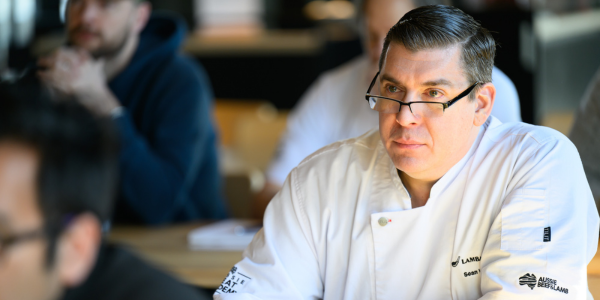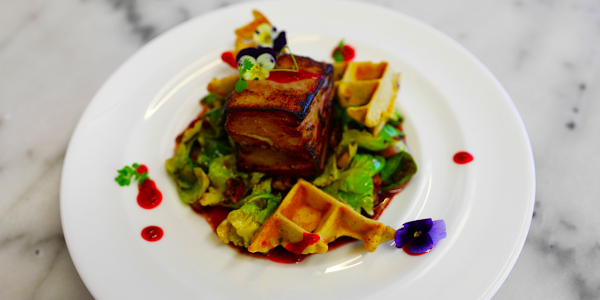You might already know that sous vide can help achieve consistency, save time and labor, and reduce waste. All true, but it’s just the beginning. We chatted with Aussie Lambassador Chef Sean Wheaton of Cuisine Solutions to score some insider tips for getting the most out of your sous vide program with Aussie meats!
Cuisine Solutions uses a lot of Aussie product in their supply chain - what makes Aussie meats a good match for sous vide cooking?
Because we’re working at such a large scale at Cuisine Solutions, consistency is key. Especially with lamb. Australia’s practices about harvest age and sizing mean we know we’re getting that same clean, mild, sweet flavor and beautiful marbling every time.
We also procure cuts like beef sirloin in very large quantities. Depending on where you’re sourcing from, grainfed product can vary a lot based on the feed. It’s a finer point, but pH levels matter too, both for flavor and color. A less stressed animal – like one raised entirely on pasture – will have better eating quality and look better in sous vide. Grassfed beef from Australia is very consistent, with a pure, natural flavor.
Are there value or “outside the middle” cuts of Aussie beef or lamb that you can take to a new level with sous vide?
It’s the wonderful thing about sous vide – once you know the optimal time and temperature, you can work with almost any cut and get something tender, flavorful and delicious. Low and slow cuts are ideal – beef shank for instance; you’re not going to do that from scratch in home or even in restaurant most likely, but cooked sous vide or brought in fully cooked it’s a snap. I’ve been working lately with lifter meat, sometimes called wedge or cap. It might typically end up as trim, but you can cook it sous vide and market it as prime rib, the eating quality is that good.

What’s a go-to or can’t fail preparation that almost any operator could use in their operation?
I always advise restaurant clients, if you’re bringing in an SKU, it’s got to work more than one place on the menu. So cuts that have built-in versatility are the way to go.
Lamb shank is great for FSRs, especially in fall and winter. It’s really versatile as a center-of-the-plate option, but also taken off the bone and shredded for pasta or a ragu, or made into croquettes and fried as a bar snack. Lamb is becoming more and more popular, we’re seeing it more often and appealing to younger demographics. But it’s still that different, outside the norm space. Items like these have a touch of familiarity, but get the instant upgrade from using lamb.
Wagyu brisket is another one – with sous vide you’re cooking the fat, not rendering it all out. So you can use a lower grade, and it will eat like a higher grade! You’re locking in all that lovely low-melting point fat. Shave it, use it as a burger topper, a brunch item, it’s so versatile.
Any new Aussie meat dishes you’ve developed and are excited about lately?
I’ve been enamored with Aussie Lamb breast lately, and did a playful dish pairing it with waffles. The breast can become a delicious lamb bacon. I took 2 pieces of breast, meat glued them together for more of a pork belly shape that I could cut into pavés. Then 2 hrs of sous vide. I was going for fall flavors, like cornbread waffles with bacon, but with lamb. It’s decadent, refined, with a little bit of fun.

We’ve also been playing a lot with fully cooked sous vide and adding smoke to it. I like to take a fully cooked, very chilled brisket – almost frozen – and rub it with BBQ spice. Then into a super hot (500°) smoker, sear it, shut the fire off and let it sit, then pull it out and wrap it and back into the walk-in to finish slacking and absorbing smoke flavor. Then you can slice it, retherm and serve. Smoking a brisket from raw you’re committing to a 12-hour process, and this way you get the same flavor development in an hour with a super consistent product. Works with shortrib too, or tri-tip.

Love it! Readers, if you want to go to school in earnest, Cuisine Solutions’ CREA is the top of the class. With online courses, seminars and in-person trainings, there’s always a time and place to learn.

